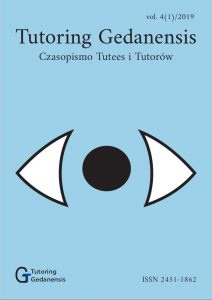Czy ptaki mogą być indykatorami zanieczyszczenia środowiska rtęcią?
Słowa kluczowe:
rtęć, ptaki, objawy neurologiczne i fizjologiczne zatrucia rtęciąDownloads
Bibliografia
Bełdowska, M. i Falkowska, L., 2016. Mercury in marine fish, mammals, seabirds, and human hair in the coastal zone of the southern Baltic. Water, Air, and Soil Pollution. 1–11. doi:10.1007/s11270-015-2735-5.
Bouton, S. N., Frederick, P. C., Spalding, M. G. i McGill, H., 1999. Effects of chronic, low concentrations of dietary methylmercury on the behavior of juvenile great egrets. Environmental Toxicolog y and Chemistry, 1934–1939. doi:10.1002/etc.5620180911.
Davis, K. J., 2014. From Miracle Metal to Global Health Risk: A 100-Year History of Mercury Prices and Production. https://geovisualist com/2014/02/23/from-miracle-metal-to-global-health-risk-a-100-year-history-of-mercury-prices-and-production/ [dostęp 20 X 2018].
Driscoll, C.T.; Young-Ji, H.; Chen, C.Y.; Evers, D.C.; Lambert, K.F.; Holsen, T.M.; Kamman, N.C.; Munson, R.K., 2007. Mercury Contamination in Forest and Freshwater Ecosystems in the Northeastern United States. BioScience (57), 17–28. doi:10.1641/B570106.
Evers, D., Burgess, N., Champoux, L., Hoskins, B., Major, A., Goodale, W., Daigle, T., 2005. Patterns and interpretation of mercury exposure in freshwater avian communities in northeastern north America. Ecotoxicolog y (14), 193–221. doi:10.1007/s10646-004-6269-7.
Evers, D.,C., Savoy L.,J., DeSorbo, C.,R., Yates, D., E., Hanson, W., Taylor, K.,M., Siegel, L.,S., John H. Cooley Jr, J.,H., Bank, M.,S., Major A., Munney, K., Mower, B.,F., Vogel, H.,S., Schoch, N., Pokras, M., Goodale, M., W., Fair, J., 2008. Adverse effects from environmental mercury loads on breeding common loons. Ecotoxicolog y, 17(2), 69–81. doi:10.1007/s10646-007-0168-7.
Fournier, F., Karasov, W., Kenow, K., Meyer, M., Hines, R., 2002. The oral bioavailability and toxicokinetics of methylmercury in common loon (Gavia immer) chicks. Comparative Biochemistry and Physiolog y Part A: Molecular & Integrative Physiolog y, 133(3), 703–714.
Główny Urząd Statystyczny, 2018. Rocznik statystyczny rolnictwa 2017. Warszawa, Zakład Wydawnictw Statystycznych.
Gworek, B., Dmuchowski, W., Baczewska, A. H., Brągoszewska, P., Bemowska-Kałabun, O., Justyna, W. J., 2017. Air Contami tion by Mercury, Emissions and Transformations – a Review. Water Air Soil Pollution. doi:10.1007/s11270-017-3311-y.
Harada, M., 1995. Minamata Disease: Methylmercury Poisoning in Japan Caused by Environmental Pollution. Critical Reviews in Toxicolog y, 25(1), 1–24. doi:10.3109/10408449509089885.
Heinz, G. i Hoffman, D., 2004. Mercury accumulation and loss in mallard eggs. Environmental Toxicolog y and Chemistry 23(1), 222–4. DOI: 10.1897/03-111.
Hosseini, M., Nabavi, S. M. i Parsa, Y., 2013. Bioaccumulation of Trace Mercury in Trophic Levels of Benthic, Benthopelagic, Pelagic Fish Sp cies, and Sea Birds from Arvand River, Iran. Biological Trace Element Research (16), 175–180. doi:10.1007/s12011-013-9841-2.
Hylander, L. D., Meili, M., 2003. 500 years of mercury production: global annual inventory by region until 2000 and associated emissions. The Science of the Total Environment (304), 13–27.
Iqbal, K. i Asmat, M., 2014. Uses and effects of mercury in medicine and dentistry. Journal of Ayub Medical College (24), 3–4.
Jonasson, I., 1970. Mercury in the natural environment. A review of recent work. Geol Surv Can. Lundholm, C., 1995. Effects of methyl mercury at different dose regimes on eggshell formation and some biochemical characteristics of the eggshell gland mucosa of the domestic fowl. Comp. Biochem. Physiol. C. Pharmacol. Toxicol. Endocrinol., 23–28.
Miles, R. D., Chapman, F., 2018. FA122. University of Florida IFAS Extension: http://edis.ifas.ufl.edu/fa122 [dostęp 20 X 2018].
Olsen, B., Evers, D., Desorbo, C., 2000. Effect of methylated mercury on the diving frequency of the common loon. Journal of Ecological Research (2), 67–72.
Risher, J. F., Murray, H. E., Prince, G. R., 2002. Organic mercury compounds: human exposure and its relevance to public. Toxicolog y and Industrial Health, 109–160.
Rytuba, J. J., 2003. Mercury from mineral deposits. Environmental Geolog y (43), 326–338. Soares, I. H., Miller, D., Lagally, H., Stillings, B., Bauersfeld, P., Cuppett, S., 1973. The comparative effect of oral ingestion of methyl mercury on chicks and rats. Poult. Sci, 452–458.
Spalding, M., G., Frederick, P.,C., McGill, H., C., Bouton, S., N., Richey, L., J., Schumacher, I., M., Blackmore C., G., Harrison, J., 2000. Histologic, neurologic, and immunologic effects of methylmercury in captive great egrets. J. Wildl. Dis. (36), 423–435. doi:10.7589/0090 3558-36.3.423.
Stempniewicz, L., Grochowski, A., 1997. Diet composition of cormorants in the breeding colony of Katy. Supplemento alle Ricerche di Biologia della Selvaggina (26), 537–544.
The New Encyclopedia Britannica, 1995. Chicago: Encyclopedia Britannica Ltd. Thompson, D., Furness, R., 1989. The chemical form of mercury stored in South Atlantic seabirds. Environmental Pollution, 60, 305–317. doi:10.1016/0269-7491(89)90111-5.
United States Environmental Protection Agency, 2000. https://www.epa.gov/sites/production/files/2016-09/documents/m cury-compounds.pdf, [dostęp 20 X 2018].
Wilson, S. J., Steenhuisen, F., Pacyna, J.,M., Pacyna, E.,G., 2006. Mapping the spatial distribution of global anthropogenic me cury atmospheric emission inventories. Atmospheric Environment, 4621–4632. doi.org/10.1016/j.atmosenv.2006.03.042.

 Uniwersyteckie Czasopisma Naukowe
Uniwersyteckie Czasopisma Naukowe



